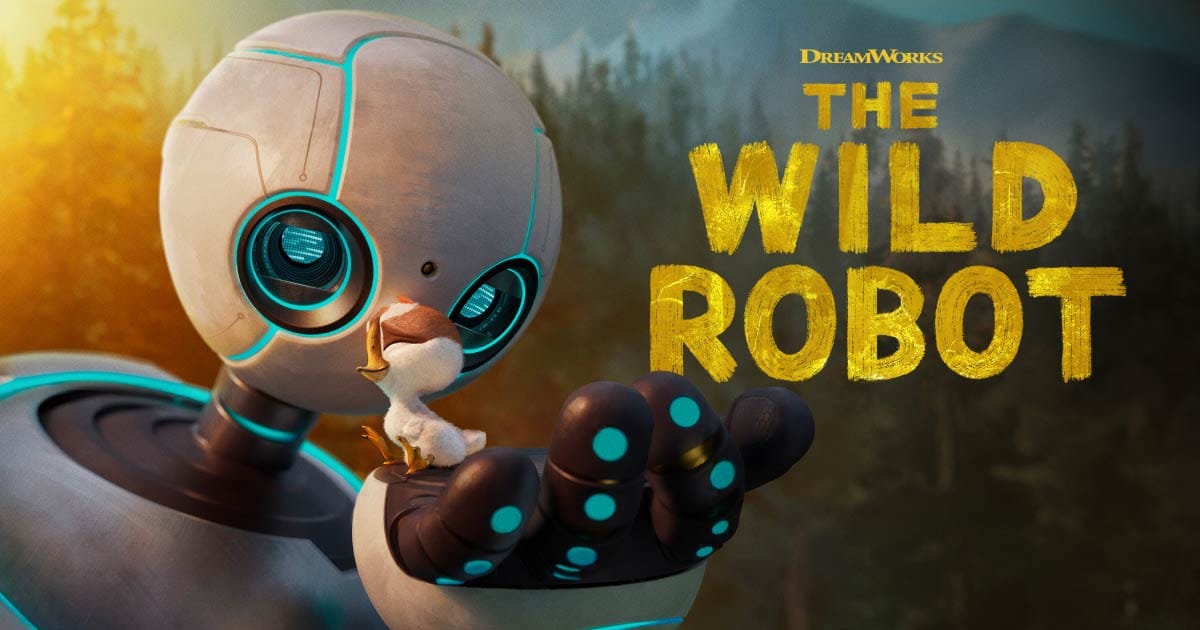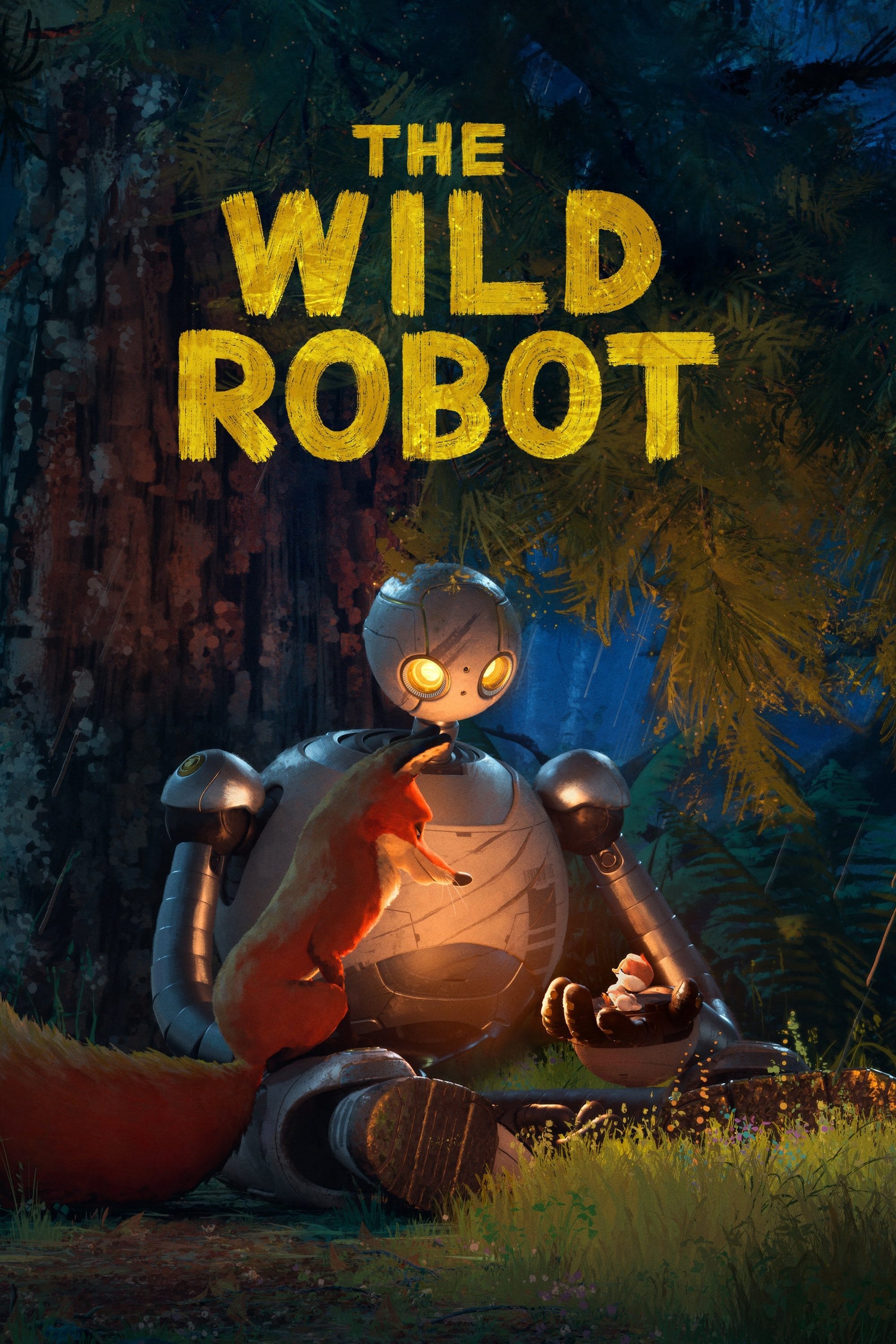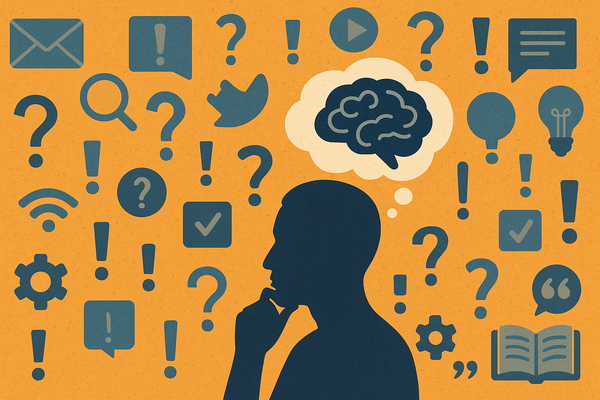A Wild Ride: Exploring the Heart and Circuits of "The Wild Robot" (2024)
"The Wild Robot" is more than just an entertaining film; it is an experience that lingers in the mind long after the credits roll.

"The Wild Robot", directed by Chris Sanders, isn't merely another animated film for children. Based on Peter Brown's beloved, award-winning, #1 New York Times bestselling book series initially released in April 2016, this movie tells the story of ROZZUM unit 7134, nicknamed “Roz” (voiced by Lupita Nyong’o). This robot finds herself stranded on a remote island inhabited by various animals. While the film boasts stunning visuals and a heartwarming premise, its true strength lies in its exploration of complex themes such as family and the interconnectedness of life. It was a joy to watch, and I will explain why.
Storytelling and Character Arcs: A Symphony of Emotion and Growth
The film's narrative unfolds at a deliberate pace, allowing for genuine emotional development and nuanced character arcs. Roz's journey from a programmed machine to a compassionate caregiver is both believable and deeply moving. Her initial interactions with the island's fauna are marked by confusion and fear, as her robotic logic struggles to comprehend the complexities of the natural world. However, as she learns to adapt and understand the animals, she begins to exhibit empathy and protectiveness, culminating in her adoption of an orphaned gosling, Brightbill 6. Initially, Roz prioritizes following her programming, but her experiences on the island lead her to develop emotions and prioritize the well-being of her adopted family and the island community.
Brightbill (voiced by Kit Connor) undergoes a parallel transformation. Initially reliant on Roz for survival, he gradually matures into a confident young goose, learning to fly and embrace his place within the flock. The relationship between Roz and Brightbill forms the film's emotional core, showcasing the power of love and connection to transcend differences. This relationship exemplifies the theme of "found family," where individuals from different backgrounds come together to form a loving and supportive unit. Roz, in her journey, embodies the idea of kindness as a survival skill, risking much to ensure the well-being of the animals around her.
The supporting characters, though not as deeply explored, add depth and humor to the narrative. Fink, the cunning fox (voiced by Pedro Pascal), initially wary of Roz, eventually becomes a loyal friend, highlighting the potential for understanding and cooperation between seemingly different beings. Other notable characters include the wise old goose Longneck (Bill Nighy) and the nurturing opossum Pinktail (Catherine O'Hara), who contribute to the film's rich tapestry of personalities and relationships.
One of the film's most striking elements is its unique approach to storytelling. Unlike many animated films that rely on forced villains or action sequences to drive the plot, "The Wild Robot" avoids these tropes in the first two acts. Instead, the film focuses on Roz's journey of self-discovery and her growing relationships with the animals, creating a captivating and emotionally resonant narrative.
Character Motivations: Driving the Narrative
The characters in "The Wild Robot" are not merely plot devices; they are driven by complex motivations that shape their actions and propel the narrative forward. Roz, initially motivated by her programming to serve humans, gradually shifts her focus to survival and finding a purpose in life. Brightbill, the orphaned gosling, is driven by the primal need to survive and the innate desire to learn to fly. Fink, the cunning fox, is motivated by self-preservation and a growing sense of loyalty towards Roz. Vontra, the retrieval robot, represents the dangers of unchecked ambition, driven by the singular goal of capturing Roz and returning her to Universal Dynamics. These diverse motivations create a dynamic interplay of characters and relationships, driving the narrative forward in a compelling and believable manner.
Dialogue and Script: A Blend of Simplicity and Profundity
The film's dialogue is refreshingly straightforward, capturing the essence of childhood wonder and the simplicity of animal communication. Yet, within this simplicity lie profound observations about life, loss, and the importance of finding one's place in the world. The script effectively balances moments of humor with poignant reflections, ensuring that the film resonates with audiences of all ages.
One minor criticism lies in the pacing of the final act. The introduction of the antagonist, Vontra (Stephanie Hsu), and the subsequent conflict feel somewhat rushed, disrupting the film's otherwise organic flow. While the climax provides exciting action sequences, it slightly detracts from the contemplative tone established in the earlier parts of the film.
AI in "The Wild Robot": A Catalyst for Change and Reflection
The film's portrayal of AI is both thought-provoking and nuanced. Roz, as an AI-powered robot, embodies the potential for technology to evolve beyond its intended purpose. Her initial programming dictates that she should serve humans, but her experiences on the island lead her to develop emotions, forge relationships, and ultimately prioritize the well-being of her adopted family and the island community. This evolution challenges the traditional perception of AI as purely logical and unemotional, suggesting that artificial intelligence can be capable of empathy and compassion and challenging the notion that artificial intelligence must remain forever separate from human emotional reality. Wishful thinking for a "machine", no doubt, but don't we humans need to reflect upon our own nature right now? Perhaps what makes Roz's character so compelling is not whether her emotions are "real" in some objective sense, but how her journey holds up a mirror to our own questions about consciousness, emotion, and authenticity. Through her evolution, we see reflections of our struggles with identity and purpose, our journey from programmed behaviors to genuine connection.
The film also explores the potential dangers of AI when it is used for destructive purposes. Vontra, a retrieval robot sent to capture Roz, represents the darker side of technology, highlighting the risks of unchecked ambition and the potential for AI to be exploited for harmful ends. The conflict between Roz and Vontra serves as a cautionary tale, reminding us that technology, while powerful, must be used responsibly and ethically.
Furthermore, "The Wild Robot" delves into the complex relationship between technology and nature. Roz's journey is a testament to the adaptability of both AI and the natural world, showcasing how technology can coexist with and even enhance our understanding of nature. The film also touches upon the recurring motif of programming and completing goals, highlighting how Roz's initial focus on fulfilling her programming gradually gives way to a deeper understanding of life and the importance of connection.
Interestingly, the film's exploration of AI extends beyond the narrative itself. The animators utilized advanced AI technology in the film's production, building upon the techniques used in previous DreamWorks films like "Puss in Boots: The Last Wish" and "The Bad Guys". This innovative use of AI in animation further emphasizes the theme of the evolving relationship between technology and creativity.
A Compelling Journey
"The Wild Robot" is a visually stunning and emotionally resonant film that explores complex themes with grace and sensitivity. Its strengths lie in its character development, heartwarming relationships, and thought-provoking portrayal of AI. The film's animation is breathtaking, capturing the beauty of the natural world with vibrant colors and intricate detail. The unique visual style, inspired by classic Disney animated films and the works of Hayao Miyazaki, employs a watercolor aesthetic that adds to the film's artistic merit. The voice acting is superb, with Lupita Nyong'o delivering a particularly captivating performance as Roz. The film's score, composed by Kris Bowers, is beautiful and perfectly complements the mood of each scene.
The film has also been a critical and commercial success. "The Wild Robot" has been well-received, with an IMDb rating of 8.2/10 based on 104,000 votes and a 97% approval rating on Rotten Tomatoes based on 241 reviews, for example. The film has been praised for its animation quality, storytelling, and voice performances. It has been described as “the best animated movie of the year and one of the best movies period” in promotional materials. The movie’s themes of adaptation, found family, and the relationship between technology and nature have resonated with audiences. Its success at the box office, grossing $324.2 million against a budget of $78 million, further attests to its popularity. Well deserved, in my honest opinion.
"The Wild Robot" stands out as a unique addition to DreamWorks Animation’s portfolio, offering a blend of science fiction and nature that appeals to both children and adults. Indeed, the film excels in many areas, even if the pacing of the final act could be improved (but I'm being intentionally picky). It is a remarkable achievement in animation, offering a powerful message about the importance of family, empathy, and the interconnectedness of all living things.
A Film That Stays With You
"The Wild Robot" is more than just an entertaining film; it is an experience that lingers in the mind long after the credits roll. Its exploration of AI, family, and the natural world sparked reflection and encouraged me to consider my own place within the larger ecosystem. The film's heartwarming story, coupled with its stunning visuals and superb voice acting, makes it a must-see for audiences of all ages. It is a film that reminds us of the power of connection, the importance of empathy, and the potential for technology to be a force for good in the world. Well up my alley, if I may say so myself.
Moreover, "The Wild Robot" provides a safe space for viewers to feel a range of emotions, from elation to sadness, despair to uncertainty, and ultimately, to pride and love. This emotional depth and resonance contribute to the film's lasting impact, making it a truly transformative viewing experience. The film's unique storytelling approach, its message about the harmonious coexistence of technology and nature, and its ability to evoke a wide spectrum of emotions in the viewer all contribute to its overall impact and lasting impression. It's a win, and it won me over for sure.






